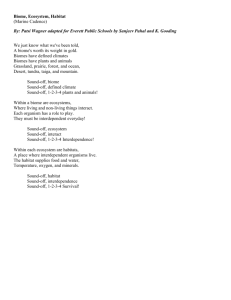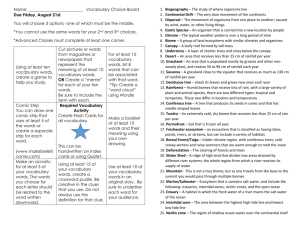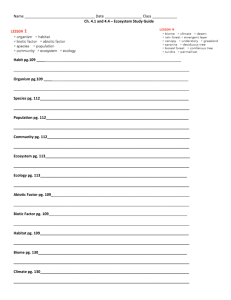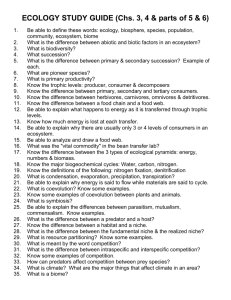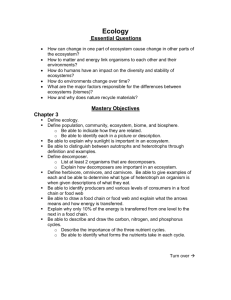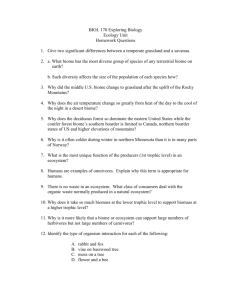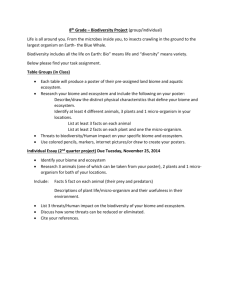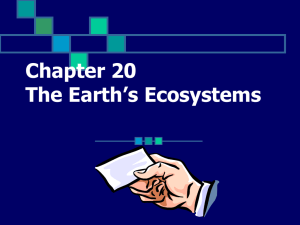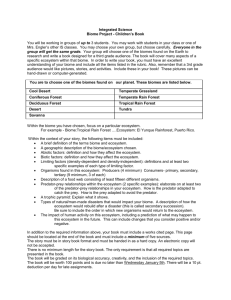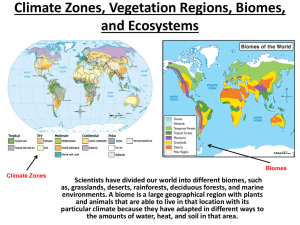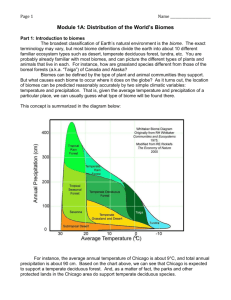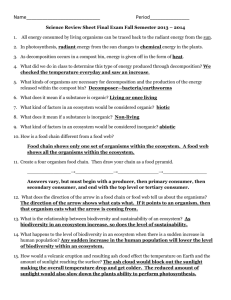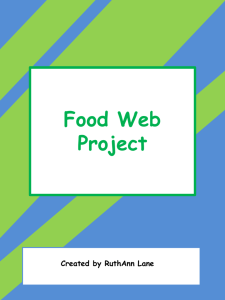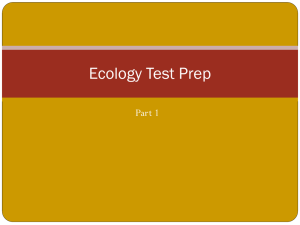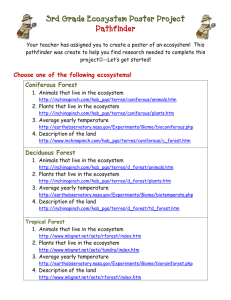Ecosystems Vocabulary List 1
advertisement
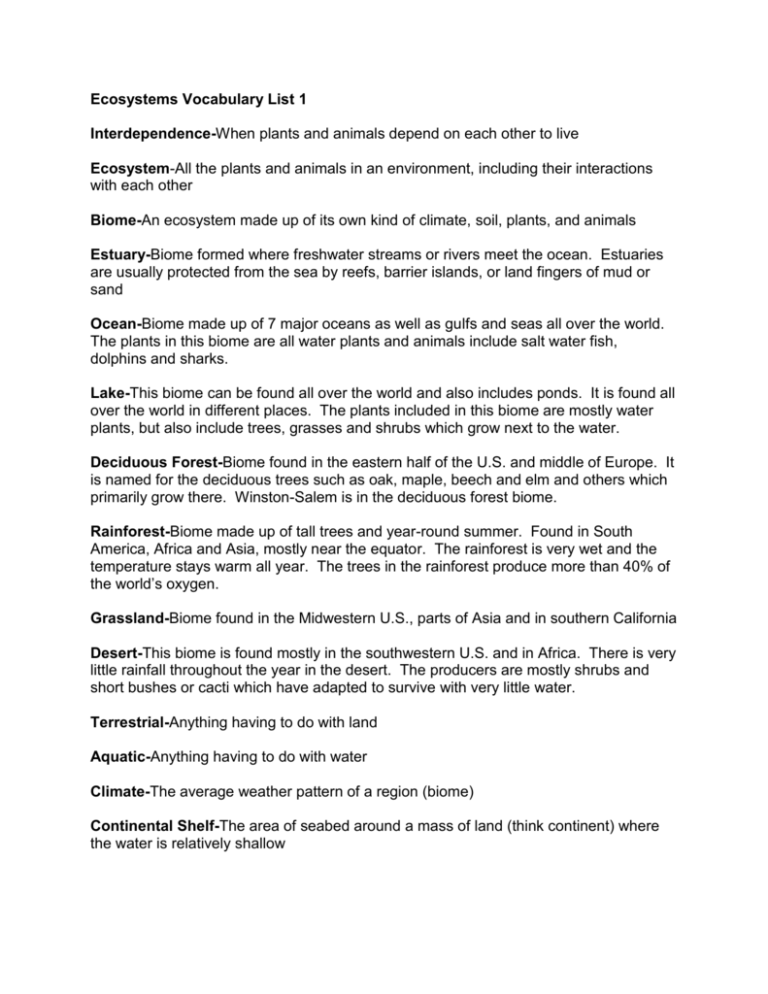
Ecosystems Vocabulary List 1 Interdependence-When plants and animals depend on each other to live Ecosystem-All the plants and animals in an environment, including their interactions with each other Biome-An ecosystem made up of its own kind of climate, soil, plants, and animals Estuary-Biome formed where freshwater streams or rivers meet the ocean. Estuaries are usually protected from the sea by reefs, barrier islands, or land fingers of mud or sand Ocean-Biome made up of 7 major oceans as well as gulfs and seas all over the world. The plants in this biome are all water plants and animals include salt water fish, dolphins and sharks. Lake-This biome can be found all over the world and also includes ponds. It is found all over the world in different places. The plants included in this biome are mostly water plants, but also include trees, grasses and shrubs which grow next to the water. Deciduous Forest-Biome found in the eastern half of the U.S. and middle of Europe. It is named for the deciduous trees such as oak, maple, beech and elm and others which primarily grow there. Winston-Salem is in the deciduous forest biome. Rainforest-Biome made up of tall trees and year-round summer. Found in South America, Africa and Asia, mostly near the equator. The rainforest is very wet and the temperature stays warm all year. The trees in the rainforest produce more than 40% of the world’s oxygen. Grassland-Biome found in the Midwestern U.S., parts of Asia and in southern California Desert-This biome is found mostly in the southwestern U.S. and in Africa. There is very little rainfall throughout the year in the desert. The producers are mostly shrubs and short bushes or cacti which have adapted to survive with very little water. Terrestrial-Anything having to do with land Aquatic-Anything having to do with water Climate-The average weather pattern of a region (biome) Continental Shelf-The area of seabed around a mass of land (think continent) where the water is relatively shallow Shoreline-The area next to a sea, ocean, or lake where the land meets the water. This could also be considered a beach. Freshwater-Water that is not salty. Freshwater biomes include rivers, lakes and streams Saltwater-Water that is salty. Saltwater biomes include oceans, bays, and seas. Biotic Factors-Living things that make up an ecosystem (plants, animals) Abiotic Factors-Non-living things that make up an ecosystem (water, soil, sun, air) Limiting Factor-Anything that controls the growth or survival of a population Energy-The ability to do work. The sun is the primary source of energy for all living things. Population-All the members of a species in an ecosystem Community-All the members of an ecosystem Organism-Any living thing Food Chain-Shows the flow of energy in an ecosystem Food Web-A bunch of food chains put together (it shows their interactions) Producer-Any plant. They produce their own food, that’s why they are called producers Consumers-Any living thing that survives by eating other living things Decomposer-Break down dead things so that their nutrients can be absorbed by living things. Examples are fungi, mushrooms, bacteria, termites
